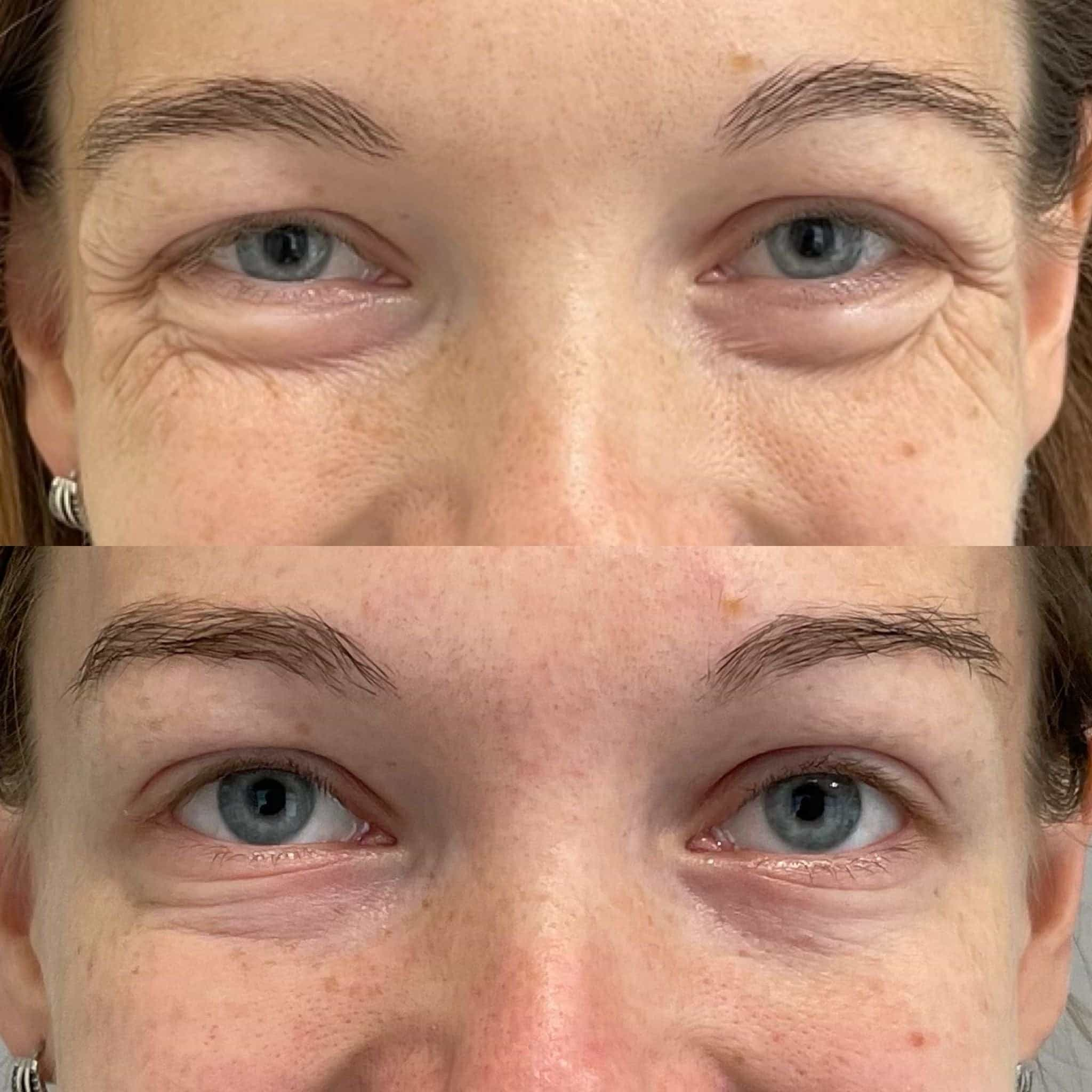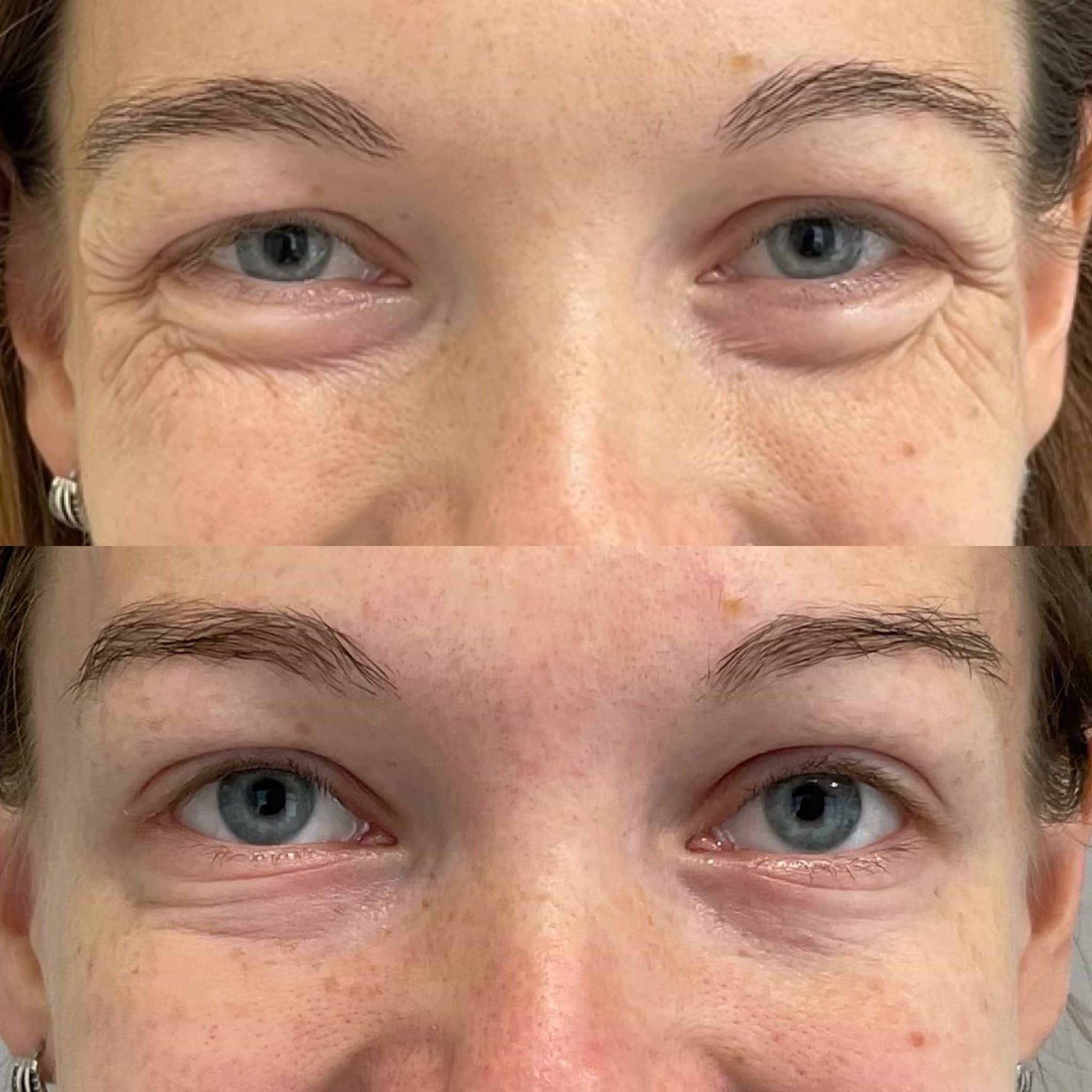Understanding Crow’s Feet
Crow’s feet, those fine lines that fan out from the corners of your eyes, are a common sign of aging. While they can be a natural part of growing older, some people find them undesirable and seek ways to minimize their appearance. Botox has emerged as a popular treatment option for reducing the look of crow’s feet in the UK.
What are Crow’s Feet?
Crow’s feet are small wrinkles that form at the outer corners of the eyes. They are caused by repeated muscle contractions, particularly when smiling or squinting, which over time lead to creases in the skin around the eyes. These fine lines become more prominent as we age and collagen production decreases.
Causes of Crow’s Feet
Crow’s feet are small wrinkles that form at the outer corners of the eyes. They are caused by repeated muscle contractions, particularly when smiling or squinting. Over time, these repeated contractions lead to creases in the skin around the eyes. As we age, collagen production decreases, making these fine lines more prominent.
Several factors contribute to the formation of crow’s feet, including sun exposure, smoking, and genetics. Sun damage breaks down collagen and elastin fibers in the skin, leading to wrinkles. Smoking also damages the skin by reducing blood flow and impairing nutrient delivery.
Botox for Crow’s Feet Treatment
Crow’s feet, those fine lines that fan out from the corners of your eyes, are a common sign of aging. While they can be a natural part of growing older, some people find them undesirable and seek ways to minimize their appearance. Botox has emerged as a popular treatment option for reducing the look of crow’s feet in the UK.
How Botox Works
Botox is a purified form of botulinum toxin type A. When injected into muscles, it works by temporarily blocking nerve signals that cause muscle contractions. This paralysis of the targeted muscles prevents the repeated contractions that lead to wrinkle formation around the eyes.
- The Botox injection smooths out the appearance of crow’s feet by relaxing the muscles responsible for their formation.
- Botox does not remove existing wrinkles but rather prevents new ones from forming and reduces the appearance of fine lines.
The Procedure
The procedure involves a series of tiny injections into specific muscles around the eyes. A qualified medical professional, such as a doctor or nurse practitioner, will use a very fine needle to administer the Botox directly into the targeted muscle fibers.
The entire procedure typically takes only a few minutes and is usually well-tolerated with minimal discomfort. You may experience some mild redness, swelling, or bruising at the injection sites, which usually subside within a few days.
After the procedure, you can resume your normal activities immediately. It’s important to avoid massaging or rubbing the treated area for at least 24 hours to prevent the Botox from spreading to unintended muscles.
Results from Botox injections typically become visible within a few days and reach their full effect after about two weeks. The effects of Botox usually last for three to six months, after which repeat injections are needed to maintain the desired results.
Duration and Results
Botox is an effective treatment for reducing the appearance of crow’s feet. It works by temporarily paralyzing the muscles responsible for wrinkle formation around the eyes.

The effects of Botox typically last for three to six months.
After this period, repeat injections are needed to maintain the desired results.
Benefits of Botox for Crow’s Feet
Crow’s feet, those fine lines radiating from the corners of your eyes, are a common sign of aging. While they are a natural part of growing older, many people seek ways to minimize their appearance. Botox has emerged as a popular treatment option in the UK for reducing the look of crow’s feet.
Reduction in Wrinkle Appearance
Botox injections work by temporarily paralyzing the muscles responsible for wrinkle formation around the eyes. This prevents the repeated contractions that lead to the deepening of crow’s feet.
The result is a smoother appearance, with a reduction in the visibility of fine lines and wrinkles.
Non-Surgical Solution
Botox is a popular treatment option for reducing the appearance of crow’s feet in the UK. It works by temporarily paralyzing the muscles responsible for wrinkle formation around the eyes.
By preventing these muscles from contracting, Botox smooths out the skin and minimizes the appearance of fine lines and wrinkles.
The results are typically visible within a few days and can last for three to six months.
Quick Procedure Time
Botox is an effective treatment option for reducing the appearance of crow’s feet because it works quickly.
The procedure itself takes only a few minutes, making it a convenient option for those seeking to minimize the signs of aging around the eyes.

Risks and Side Effects of Botox
While Botox is generally considered safe when administered by a qualified professional, it’s important to be aware of potential risks and side effects. These can include bruising, swelling, and redness at the injection site, as well as headache, drooping eyelids, and muscle weakness. In rare cases, more serious complications such as allergic reactions or difficulty swallowing may occur.
Temporary Side Effects
Temporary side effects from Botox are usually mild and short-lived. They can include bruising, swelling, redness, and tenderness at the injection site. Some people also experience headache, fatigue, or muscle weakness. These side effects typically resolve within a few days to a week.
It’s important to note that these side effects are temporary and generally not serious. However, if you experience any unusual or persistent symptoms after receiving Botox, it is important to consult with your doctor or the healthcare professional who administered the treatment.
Rare Complications
While Botox is generally considered safe when administered by a qualified professional, it’s important to be aware of potential risks and side effects. These can include bruising, swelling, and redness at the injection site, as well as headache, drooping eyelids, and muscle weakness.
In rare cases, more serious complications such as allergic reactions or difficulty swallowing may occur. It is essential to consult with a healthcare professional to discuss your medical history and any potential contraindications before undergoing Botox treatment.
Choosing a Qualified Practitioner
Choosing a qualified practitioner is crucial when considering Botox treatments like reducing crow’s feet. A skilled and experienced medical professional will ensure the procedure is performed safely and effectively, minimizing risks and maximizing desired results.
Importance of Experience
Choosing a qualified practitioner is paramount when considering any cosmetic procedure, and Botox treatment is no exception. Experience plays a vital role in ensuring safe and effective results. A practitioner with extensive experience in administering Botox will have a deep understanding of facial anatomy, muscle groups, and the nuances of injecting this neurotoxin.
Look for practitioners who are board-certified by recognized medical boards and have specialized training in aesthetic medicine. A good track record and positive patient testimonials can also provide valuable insights into their expertise and skills.
Qualifications and Certifications
Choosing a qualified practitioner is crucial when considering Botox treatments like reducing crow’s feet. A skilled and experienced medical professional will ensure the procedure is performed safely and effectively, minimizing risks and maximizing desired results.
When selecting a practitioner, prioritize those who are board-certified by recognized medical boards and possess specialized training in aesthetic medicine. Look for practitioners with extensive experience in administering Botox, as this demonstrates their proficiency and understanding of facial anatomy.
In addition to credentials and experience, consider factors like patient testimonials, the clinic’s reputation, and the practitioner’s communication style. Openly discussing your goals, concerns, and medical history is essential to ensure a personalized treatment plan that aligns with your expectations.
Consultation Process
Choosing a qualified practitioner is crucial when considering Botox treatments. Look for practitioners who are board-certified by recognized medical boards and possess specialized training in aesthetic medicine. Experience is also vital, as it demonstrates their proficiency in administering Botox and understanding facial anatomy. In addition to credentials, consider patient testimonials, the clinic’s reputation, and the practitioner’s communication style. A good consultation process involves a thorough discussion of your goals, concerns, and medical history to ensure a personalized treatment plan that aligns with your expectations.
Cost and Availability of Botox in the UK
The cost of Botox in the UK can vary depending on factors such as location, clinic reputation, and the number of units injected. Generally, you can expect to pay anywhere from £200 to £500 per session for treatment targeting crow’s feet. The availability of Botox is generally good in the UK, with many clinics offering this popular treatment option.
Average Prices
The cost of Botox in the UK can vary depending on factors such as location, clinic reputation, and the number of units injected. Generally, you can expect to pay anywhere from £200 to £500 per session for treatment targeting crow’s feet.
Botox is generally widely available in the UK, with many clinics offering this popular treatment option.
Factors Affecting Cost
The cost of Botox in the UK can vary depending on several factors. Location plays a role, with prices tending to be higher in major cities like London compared to more rural areas. The reputation and experience of the clinic or practitioner also influence the price. Clinics with established reputations and experienced practitioners often charge more.
Another factor affecting cost is the number of units of Botox required to achieve the desired results. More units typically mean a higher overall cost.
Generally, you can expect to pay between £200 and £500 per session for Botox treatment targeting crow’s feet in the UK.
Botox is widely available in the UK, with numerous clinics offering this popular treatment option.
Accessibility
The cost of Botox in the UK can vary depending on factors such as location, clinic reputation, and the number of units injected. Generally, you can expect to pay anywhere from £200 to £500 per session for treatment targeting crow’s feet.
Botox is generally widely available in the UK, with many clinics offering this popular treatment option.
Aftercare Instructions
Aftercare instructions are essential to ensure optimal results and minimize potential side effects from Botox treatments.
Recommendations for Optimal Results
Aftercare instructions are crucial for maximizing the benefits of your Botox treatment and minimizing potential complications.
Here are some recommendations for optimal results:
Avoid touching or massaging the treated area for at least 24 hours after the procedure. This will prevent the spread of Botox to unintended muscles, which can lead to asymmetrical or undesirable results.
Stay upright and avoid lying down flat for several hours after treatment. This helps to prevent the Botox from migrating downwards and causing unwanted drooping or unevenness.
Avoid strenuous activities, including exercise and heavy lifting, for at least 24 hours after treatment. Strenuous activity can increase blood flow to the treated area, potentially affecting the distribution of Botox.
Do not apply makeup or skincare products to the treated area immediately after treatment. Allow time for the Botox to settle before applying any products to avoid irritation or interference with its effectiveness.
Avoid sun exposure and use sunscreen diligently. Sun exposure can damage your skin, making you more susceptible to bruising and discoloration, and may also affect the longevity of your Botox results.
Drink plenty of water to stay hydrated. Hydration helps support skin health and overall well-being, contributing to a smoother healing process.
If you experience any unusual or persistent side effects, such as bruising, swelling, redness, headache, or muscle weakness that lasts longer than expected, contact your doctor or the healthcare professional who administered the Botox treatment.
Signs to Watch For
Aftercare instructions are essential for maximizing the benefits of your Botox treatment and minimizing potential complications.
Here are some recommendations for optimal results: Avoid touching or massaging the treated area for at least 24 hours after the procedure. This will prevent the spread of Botox to unintended muscles, which can lead to asymmetrical or undesirable results.
Stay upright and avoid lying down flat for several hours after treatment. This helps to prevent the Botox from migrating downwards and causing unwanted drooping or unevenness.
Avoid strenuous activities, including exercise and heavy lifting, for at least 24 hours after treatment. Strenuous activity can increase blood flow to the treated area, potentially affecting the distribution of Botox.
Do not apply makeup or skincare products to the treated area immediately after treatment. Allow time for the Botox to settle before applying any products to avoid irritation or interference with its effectiveness.
Avoid sun exposure and use sunscreen diligently. Sun exposure can damage your skin, making you more susceptible to bruising and discoloration, and may also affect the longevity of your Botox results.
Drink plenty of water to stay hydrated. Hydration helps support skin health and overall well-being, contributing to a smoother healing process.
If you experience any unusual or persistent side effects, such as bruising, swelling, redness, headache, or muscle weakness that lasts longer than expected, contact your doctor or the healthcare professional who administered the Botox treatment.
Speak to Dr. Laura Geige at It’s Me & You Clinic about Crows Feet Treatment options that work.
- Lip Filler What Is It Made Of - June 2, 2025
- What Are The Best CBD Gummy Sweets For Focus And Clarity - June 1, 2025
- The Emotional Toll Of Breadcrumbing: How To Protect Yourself - May 31, 2025

